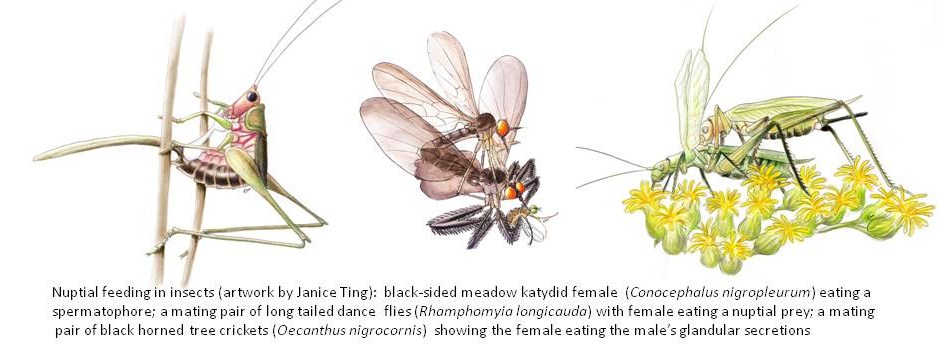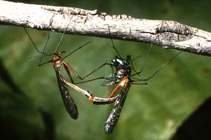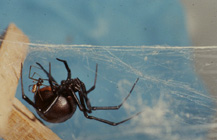
Significance of the Research
Males of many animal species sport elaborate weaponry or ornamentation used in competing for and attracting mates. Although such traits were explained by Darwin to have evolved via sexual selection, we still lack a full understanding of why this type of selection is usually greater on males than on females. To address this, our research focuses on exceptional species that show behavioural “role-reversal” i.e. sexually-selected females compete for access to choosy males. Thus we can understand patterns of sexual selection in general. The work has provided the first experimental tests of how male reproductive investment controls the sex roles. Male investment in our study species comprises valuable mating meals (nuptial gifts) that females compete for: e.g. prey in empid dance flies (Diptera: Empididae) and the spermatophore gift and other glandular secretions in orthopteran insects (crickets (Gryllidae), katydids and New Zealand weta:).
Recently we have addressed the evolution of sex-specific secondary sexual structures – ornaments and weapons – with a main question being why sex-specific ornamentation is rare in females even in ‘role-reversed’ species. Hypotheses have come from new developments in theory of how these traits evolve in females. We have been testing these hypotheses in a couple of the rarities – ornamented female dance flies and weta – by measuring selection in the wild. This includes not only sexual selection but also viability selection through predation on ornamented individuals. Our studies of the intensity and form of multivariate selection on the female ornaments uses (i) female mating success to measure sexual selection and (ii) survival of spider web predation to estimate viability selection on females. For a genus of ground weta (Hemiandrus) with many species that vary in degree of female ornamentation, molecular-genetic evolutionary trees (from collaborators) are being used to test hypotheses about ornament evolution. Results with sexual selection on females can be compared to our studies of related species with sexual selection on males. These projects have examined sexual selection on male-specific weaponry in tree weta (Hemideina) and both sexual selection and viability selection on male traits in tree crickets that fall prey to hunting wasps. Our lab work investigates the role of male nuptial gifts with recent experiments testing the hypothesis that the mating gifts in our study species are of significant value to females.



